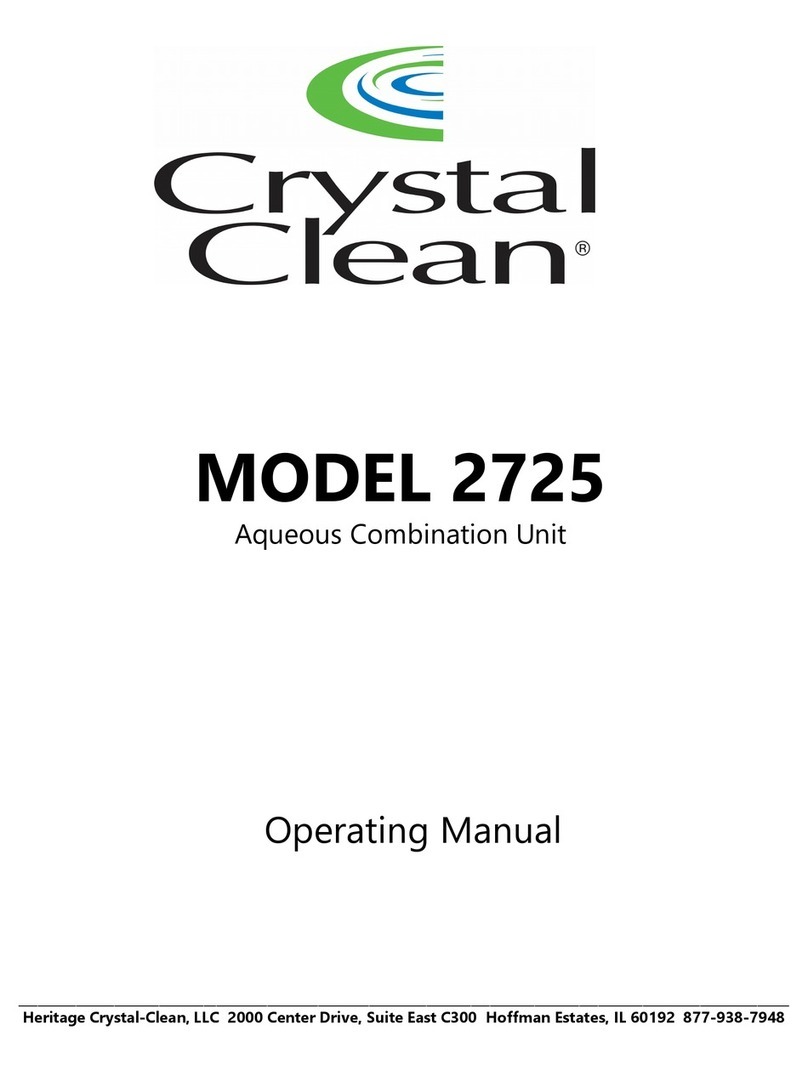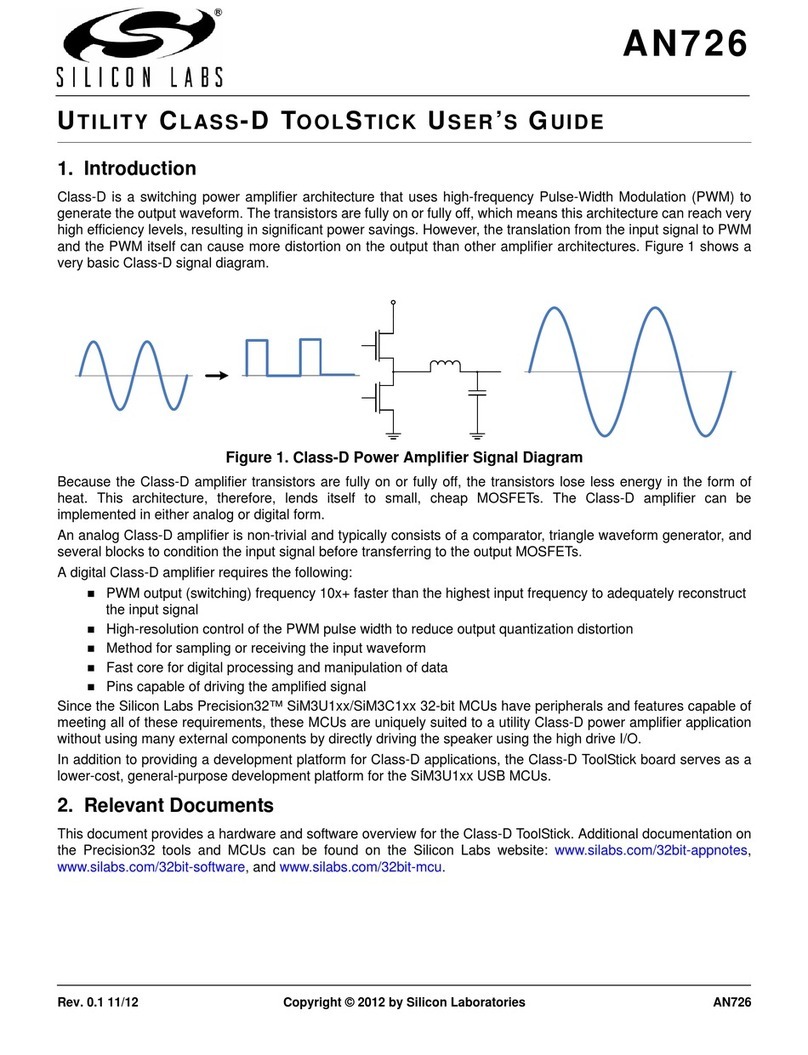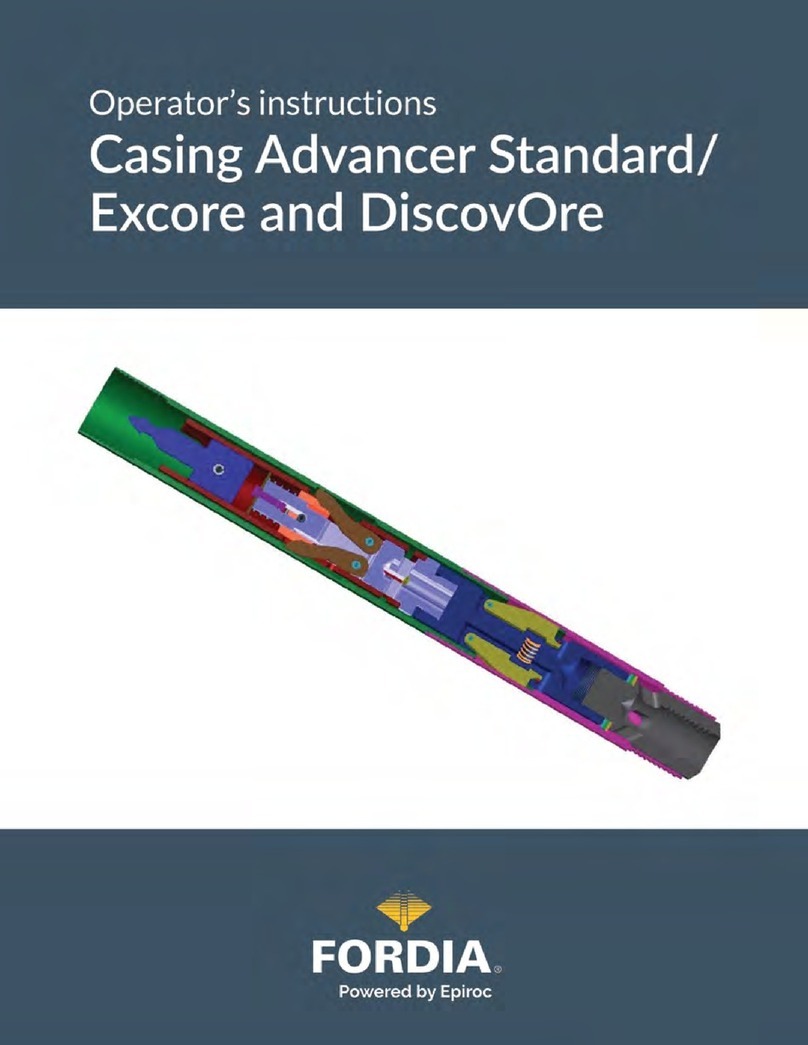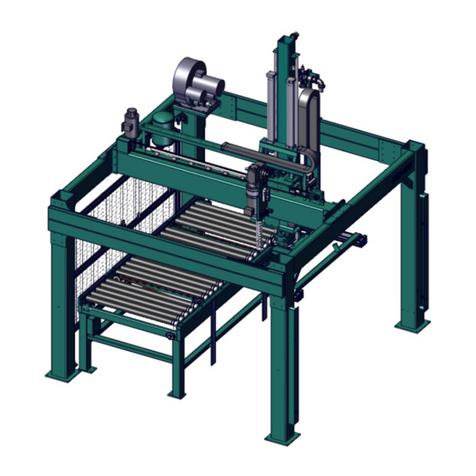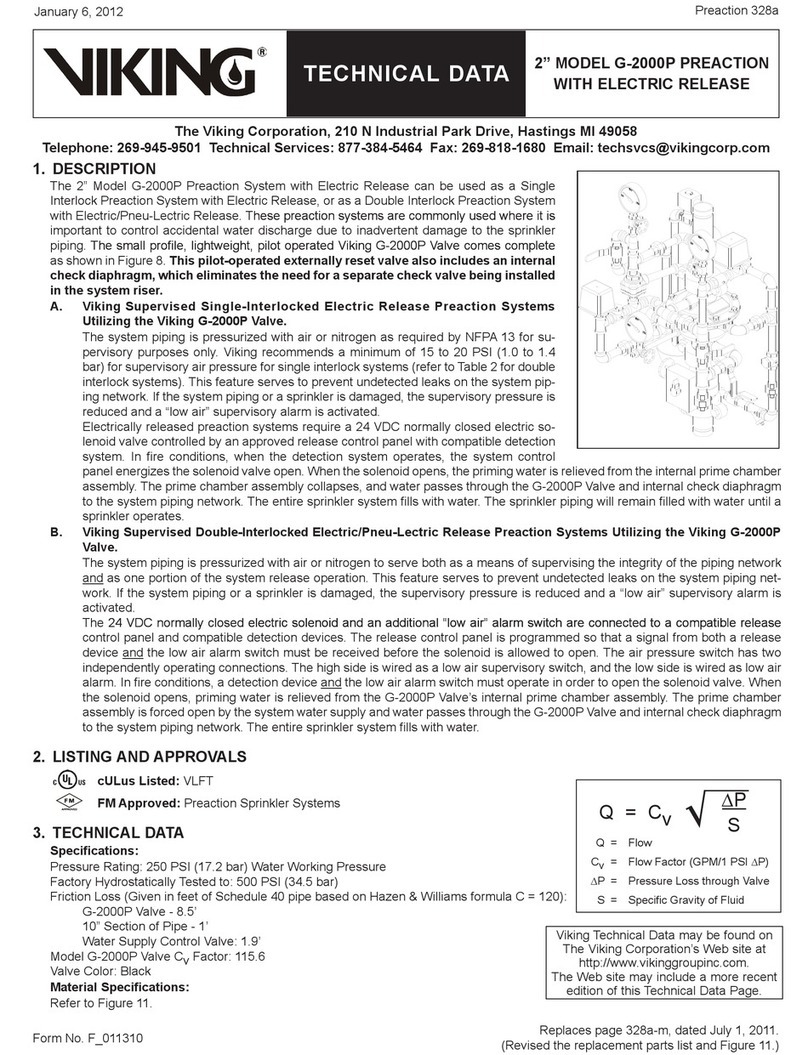Bavis TransTrax Manual

Captive Carrier TransTrax®
Installation and Service Manual
Utilizing BavSonic Audio
E. F. Bavis & Associates, Inc.
201 Grandin Road
Maineville, Ohio 45039
(513) 677-0500
Copyright 2011 E. F. Bavis & Associates, Inc. Revised 3/24/2011
All Rights Reserved P/N 00655011


Captive Carrier TransTrax®
Table of Contents
Overview..............................................................................................................................1
Typical Diagram....................................................................................................................... 3
Installation................................................................................................................................ 4
Airlock Assembly........................................................................................................ 7
Ceiling Trims............................................................................................................... 7
Power Connection........................................................................................................ 8
Installing Tape ............................................................................................................. 8
Wiring ......................................................................................................................... 9
Shift Point Adjustment ................................................................................................ 9
Autocycler .............................................................................................................................. 10
Track Preparation................................................................................................................... 11
Customer Mounting ............................................................................................................... 12
Mounting Block Diagram ...................................................................................................... 13
Audio Adjustment.................................................................................................................. 14
Troubleshooting the TransTrax®........................................................................................... 15
Maintaining the TransTrax®.................................................................................................. 17
User Instructions..................................................................................................................... 18
Shift Point Diagram................................................................................................................ 19
Wiring Diagram...................................................................................................................... 20
Radius & Trim Diagram ........................................................................................................ 21
Tools Necessary for Installation ............................................................................................ 22
TransTrax® Shipping Manifest ............................................................................................ 23


1
Captive Carrier TransTrax®
Overview
The TransTrax®Captive Carrier is a mechanical, positive drive conveyor system kit intended for
the conveyance of pharmacy prescriptions and documents between customers and pharmacists at
drive-thru pharmacy lanes. For ease of use by customers, the door of the carrier car opens and
shuts automatically. The closing of the door is accomplished by spring force. The opening motion
is accomplished when a lever on the bottom of the carrier contacts the inside or outside stabilizers.
Inside the carrier is a spring-loaded bail to keep the receipts and small bags from falling or blowing
out of the carrier. Note that the carrier inverts during its travel. Whatever is inserted into the
carrier flips upside down when it is delivered.
This kit features one piece extruded architectural grade aluminum tubing that has a satin anodized
finish. The tubing can be, using a power miter box with the proper blade installed, cut and spliced
to suit dimensions dictated by varying site conditions. The system is sold as a complete kit ready
to install at a site. The standard kit allows for a maximum tubing centerline-to-centerline distance
of 23'11". Minimum distance is 3'11". Maximum overall height is 16'. Longer, shorter and/or
taller sites can be accommodated. Please consult the factory for assistance and pricing.
(Note; With factory assistance, the minimum horizontal distance from center line to center line
of the vertical tube is 32 inches, maximum horizontal distance from center line to center line of
the vertical tube is 33 feet, 10 inches. Maximum vertical height from the top of the horizontal
tube to the drive surface or finished floor, whichever is the greater, is 16 feet.)
The TransTrax®must be run in an overhead configuration. It was not designed to accommodate
"Downsend" configurations. If there is a need for this type of configuration at a given site, we
suggest that you consider a product from our Autoveyorproduct line. Please contact us for more
details on this product line.
In order to provide the greatest speed and safety of operation, the TransTrax®operates at two
different speeds. The carrier travels at slow speed when it is exposed to either the customer or
pharmacist. Then it travels at a much higher speed when in the horizontal section of the track
when the carrier is not exposed to people. This model features a proven system of distance
monitoring to control shift points versus less sophisticated "time based" systems. In addition, the
Captive Carrier system features a mechanical brake to prevent the CARRIER from coasting
when the system is off.
The Captive Carrier features dual stopping heights: high for vehicles such as vans and trucks, low
for cars. There are two (high and low) premium weatherproof buttons for send. The stopping
height is determined by pressing the appropriate CAR or TRUCK buttons when sending the
CARRIER out to the customer. The system allows one move from car to truck or vice versa; then
the CARRIER must be recalled.
Customer audio components, including wiring harness, microphone, speaker and two call buttons
are included with the TransTrax®.
The weight capacity of the system is conservatively rated at one pound. There are safeguards built
into the system which prevent catastrophic failure should the carrier be overloaded.

2
This system is intrinsically safe in that the mechanical power levels at the moving parts (carriage
and carrier) are below 40 lbs. of force when accessible by the users. The electrical power levels at
all locations other than the INSIDE VERTICAL STANDOFF are intrinsically safe in that they are at
NEC Class II levels (24vdc 100 VAC) or lower.
The TransTrax®has been reviewed by a third party for safety and suitability for the given
application. Please review the label applied to the machine for details concerning this review.
Please note that the intrinsically safe power level does require that the system be smooth running
without any extra drag induced by poor fitups, misalignment at joints in the tubing and other
installation related problems, or it simply won't run properly.
Each part in the kit contains a PSA label with the part name and number attached to it. Please read
over this manual before installation to familiarize you with the different components and where they
are used in the system.
A schematic of an installed TransTrax®system identifying major components by part number
follows.
If there are questions about any of the following, contact the Technical Service Department at (513) 677-
0500.
Note: Shipping manifest can be found on Page 23; a listing of required tools on Page 22.

3
16
12
13
14
38
163
4
163
4
24
16
CEILING TRIM EXTENSION
CEILING TRIM
OPENING FOR CEILING TRIM
CUT ISLAND HEIGHT OFF
BOTTOM OF TRACK
46
WALL ROUGH OPENING
CLEAR CHANNEL
183
4
163
4
12
16 X 16
CLEAR CHANNEL
24
R12
HARDENED
TT RADIUS
04016333
CEILING TRIM
04021224
CEILING LINE
110 VAC 20 AMP OUTLET
92" FROM FLOOR
CENTERED TO TRACK
INSIDE VERTICAL
ASSEMBLY
04013596 CC CARRIER
04059991
HARDENED
TT RADIUS
04016333
CEILING TRIM
04021224
CUSTOMER VERTICAL
ASSEMBLY
04015596
12
SEE PAGE 21
FOR MINIMUM
REQUIREMENTS
HORIZONTAL SECTION
04005591
12

4
Installation
Installation Overview:
The process of installing a TransTrax®into a building consists of first mounting the inside vertical,
attaching the radius, adding the horizontal section, attaching the customer radius, and then
mounting the customer end. All horizontal wiring cables are designed to run inside the tubing.
After the tubing is installed, the AIRLOCK ASSEMBLY and CEILING TRIMS are mounted. The
electrical connection is then made. The final aspect of the assembly process consists of feeding the
DRIVE TAPE into the machine, and adjusting the electronic motor control.
The inside vertical unit, customer vertical unit and carrier are all tested as a unit in the factory. Do
not mix and match components when installing a multiple lane job.
The following detailed description provides step by step details of this process, as well as
important notes and cautions. Read these details carefully before attempting to install the
TransTrax®.
Installation Procedures:
The first part of the TransTrax®Kit is a completely assembled INSIDE VERTICAL UNIT. The
System Electronics are housed in the WALL STANDOFF portion of the INSIDE VERTICAL UNIT.
The WALL STANDOFF sides open outward to expose the back. The WALL STANDOFF BACK
needs to be mounted securely to the wall.
CAUTION: The WALL STANDOFF supports the entire weight of the INSIDE VERTICAL UNIT.
Do not just use molly bolts or similar type mounts into the drywall. Make certain that the fasteners
and mounting surface are adequate to fully support this component and the forces that occur during
operation.
The bottom of the INSIDE VERTICAL UNIT should be positioned 46” off the inside floor. If the
vision window frame obstructs the placement of the WALL STANDOFF, it can be repositioned up
to 6” higher on the VERTICAL TUBING by removing its associated screws and placing it at the
higher position.

5
Cutting TransTrax®Tube:
The TransTrax®system uses a proprietary aluminum extrusion. This extrusion must be cut
using carbide tipped circular saw blade in a power miter box. No other way of cutting the
tube is acceptable.
Many have tried to use an abrasive blade installed in a power miter box to cut the tube. Do
not use this method as it will yield cuts that will not function properly. Further, since the
cuts must be made dead square, a good quality miter box is the only acceptable way to
make the cuts.
If you have any questions regarding the proper method of cutting the tubing, please contact
the factory. Cutting the tube properly is key to making the system function properly.
The INSIDE VERTICAL EXTENSION should be cut to a dimension that will allow the FORMED
RADIUS to exit the building via the 16" x 24" clearance hole in the wall. The INSIDE VERTICAL
EXTENSION must then be deburred and the tape slot chamfered1.
NOTE: The area of the TAPE SLOT where the tubes are joined must actually be CHAMFERED
on both tubes and on the top and bottom track and not just deburred to allow the tape to pass
easily in the event of a slight misalignment. Inspect the factory prepared ends for an example.
The factory prefers to use a conical rotary cutter in a high speed grinding tool such as a Dremel.
1 Fig. 1

6
Connect the HORIZONTAL WIRING CABLES To the inside vertical assembly and through all
other tubing, as the unit is assembled. Sometimes “fishing” the wiring cable through the tubing
can be a challenge due to the screws, etc. We have found that a “fish tape” made from a scrap
section of tape does a great job. Just attach one end of the harness to a 10-12’ length of tape with
electrical tape and push the tape through the tube. The cable can then be easily pulled through
using the tape to push the tape through the tube. The cable can then be easily pulled through using
the tape to pull the cable. Attach the tubing to the INSIDE VERTICAL UNIT using two of the
extruded internal SPLICE PLATES². Be careful when running screws into the tubing not to nick
or cut any of the wires.
The FORMED RADIUS needs to be attached to the INSIDE VERTICAL EXTENSION using the
extruded internal SPLICE PLATES³.
CAUTION: The FORMED RADII are not designed to be cut. They were designed to be
used as is. Any modifications to this component will void the warranty and will likely yield
less than acceptable operation.
The CUSTOMER VERTICAL UNIT is completely assembled and designed for installation at a site
with no elevation difference from the lane to the island. Measure the distance from the lane to the
island and cut this amount off of the bottom of the CUSTOMER VERTICAL UNIT. It mounts to
the island with a CUSTOMER BASE UNIT. The CUSTOMER BASE UNIT mounts to the island
via two 3/8" holes (Note: base unit to island fasteners not provided) and to the CUSTOMER
VERTICAL TUBING via two self-drilling screws4. The CUSTOMER VERTICAL UNIT is 120"
tall. It needs to be cut to length which will allow the HORIZONTAL TUBING to be plumb
horizontally after the FORMED RADIUS is attached to it. Be sure to deburr and chamfer each end
of the tubing5before proceeding.
CAUTION: When cutting off the top of the customer unit, make sure that the vertical cable
from the customer unit is pulled back down the customer tube to prevent cutting the cable.
_______________________
2Fig. 2
3Fig. 2
4Fig. 3
5Fig. 1

7
The FORMED RADIUS needs to be attached to the CUSTOMER VERTICAL UNIT using the
extruded internal SPLICE PLATES6.
The HORIZONTAL TUBING needs to be cut to a dimension which will allow both of the vertical
units to be plumb vertically after it is installed to the FORMED RADII. Be sure to deburr and
chamfer each end of the tubing1 before proceeding.
Airlock Assembly:
The AIRLOCK ASSEMBLY is a two-piece design. Attach the AIRLOCK BOTTOM using the self
drilling screws provided8 . Note the alignment tabs on this part that center it on the tube. The
notched end goes on the radius. Install the AIRLOCK TOP to the BOTTOM. Fill the area between
the AIRLOCK ASSEMBLY and the 16" x 24" opening with insulating material and cover with
drywall, sheathing board or other appropriate material.
Ceiling Trims:
Secure the CEILING TRIM halves together around the TransTrax®tube with the #8-32 hardware
provided. Holes must be predrilled with the short 9/64" bit provided in the installation accessories
to prevent drilling into and damaging wiring. Attach the ceiling trim to the tubing of the
TransTrax®with the #8x1/4" self-tapping screws provided. These screws do not protrude into the
tubing greatly simplifying running the wiring. Note: The trim must be on the vertical section of
tubing, not the radius. If it is necessary to attach the trim to the ceiling, it will be necessary to drill
holes for this purpose, as there are no holes provided for this. Test the machine to insure that there
is nothing preventing the car from traveling through the flaps.
NOTE: CEILING TRIMS are designed to be mounted on the vertical tube and are not designed
to be mounted on the FORMED RADIUS. When installing trims, make sure that the CAR moves
freely through the trim and does not rub or bump the sides of this component.
Note that six 1" angled reinforcement plates are included in the installation accessories of each
TransTrax®. These are intended to be used when installing the ceiling trims and airlocks when it is
not possible to get fasteners in from the bottom of the tube or the sides. Simply attach the angle to
the airlock bottom or ceiling trim back and then the side of the tube.
_______________________
6Fig. 2
7Fig. 2
8See Drawing on page 3

8
Power Connection:
The AC Line connection is at the top of the INSIDE VERTICAL STANDOFF. Connection method
should comply with all authorities having jurisdiction, (i.e. National, State or Local Electrical
Codes). A 1/2" knockout is provided on a single gang box cover. Removing the cover will reveal
three leads for termination.
The white wire is the neutral.
The black wire is the hot. (Single phase 120vac)
Green is for ground.
NOTE: To reduce the risk of shock hazard of both line voltage and static, the ground must be
connected to a good earth ground.
The wiring can be enclosed in flexible metallic or nonmetallic conduit. If a cord connection is
acceptable, one is provided in the kit complete with a romex connector. NOTE: On the supplied
cord the ribbed wire is the neutral connection and the smooth wire is the HOT. Please reduce the
cord to a minimum length before connecting. Do not use an extension cord for permanent wiring
and do not run the cord through or conceal in walls, ceilings and or other permanent fixtures.
Press the POWER BUTTON once. The LED above it should come on indicating that the unit has
power. Pressing it again should toggle the power off.
Installing Tape:
NOTE: The AC power must be on to install the tape as this machine has a mechanical brake
that requires power to release.
Remove the CUSTOMER SPEAKER PANEL. Feed the TAPE into the tape slot at the CUSTOMER
SPEAKER OPENING insuring that it pushes smoothly all the way into the power unit of the
INSIDE VERTICAL UNIT. Cut the tape two feet longer than this dimension. Remove the tape and
dress the ends9. Attach the CARRIER to the TAPE10. Before reinserting the prepared tape with
CARRIER attached, take a section of the discarded tape (two feet will do) with square cut ends and
run it through the system by hand with a screwdriver. If any rough spots or obstructions exist,
correct them before proceeding. Reinsert the TAPE into the tape slot. At the INSIDE VERTICAL
UNIT, Press and hold the brake release while inserting the tape. Note that the LED comes on.
_____________________
9Fig.5
10Fig.6

9
Engage the tape with a small screwdriver pushing firmly down, without damaging the tape,
consistently, but slowly, allowing the tape to engage the gear, wrap around and feed into the tape
return slot. Do this until the magnet block of the CARRIER is engaging the upper black non-
contact switch on the CUSTOMER VERTICAL UNIT. Replace the CUSTOMER SPEAKER
PANEL.
Carefully jog the car inside and back outside while checking that there is nothing obstructing or
binding the car. Release the switch back to the normal position.
With the power on, pressing the "RECALL" button should cause the CARRIER to come in. By
pressing the "CAR" button, the CARRIER should go out to the lower car stop position. By
pressing the "TRUCK" button, the CARRIER should go out to the higher truck stop position.
Note that the microprocessor control will only allow one move between car and truck or truck and
car before it will require the car to be recalled inside. If the carrier does not run, or does not run
smoothly, please consult the factory for assistance.
Wiring:
The wiring for the TransTrax®is connectorized and is enclosed within the tubing of the machine.
The vertical cable extends through the top of the vertical assemblies and connects with the
horizontal cable. The horizontal cable is identical on both ends and cannot be installed backwards.
After you have connected the audio horizontal harness, wrap both ends of the strain relief boot
with the electrical tape provided.
NOTE: A version of this unit dated before 05/2003 has the horizontal harness running directly to
the outside base audio board and inside to the audio console.
Power Drive Adjustment:
Open the hinged INSIDE STANDOFF LEFT COVER11 to get access to the MOTOR CONTROL
BOARD. The shift point adjustments are next. There are three adjustments, SEND, RECALL and
HIGH. SEND adjusts when the carrier shifts from low into high speed when the CARRIER is
sent from inside to customer. RECALL adjusts when the CARRIER shifts from low into high
speed when the CARRIER is sent from customer to inside. HIGH adjusts how long the
CARRIER stays in high speed.
The CARRIER should be in low speed when traveling through the AIRLOCK, RADII and in sight
of users. It should be in high speed only in the HORIZONTAL section. If the car is in high speed
in the radii, the CARRIER may flip out of the car. Adjust the SEND pot so that when the
CARRIER is traveling from the inside to customer, it shifts into HIGH SPEED after it comes out
of the AIRLOCK. Adjust the HIGH pot so that the CARRIER shifts back into low before it enters
the CUSTOMER FORMED RADIUS. Adjust the RECALL pot so that when the CARRIER is
traveling from the customer to the inside, it shifts into HIGH SPEED after it comes out of the
CUSTOMER FORMED RADIUS. Observe that the CARRIER shifts back into slow before it
enters the AIRLOCK. Readjust as necessary so that the CARRIER is in high speed only in the
HORIZONTAL SECTION but not in the AIRLOCK or FORMED RADII.
_____________________
11See Drawing on Page 3 for location of Standoff

10
Note: The shift points are controlled by a microprocessor that is monitoring the rotation of the
sprocket shaft and the settings should not vary due to speed, that is monitoring the rotation of the
sprocket shaft and the settings should not vary due to speed, voltage, temperature, age of machine,
etc. Position 1 of dip switch DS1 controls the range of the adjustment for the high speed.
On=Long, Off=Short.12
If there is a problem with a carrier missing a switch, check to see what the gap between the switch
and the magnet is. Anything over 1/8" and the potential for missing switches exists. This can
sometimes be adjusted by loosening the black carrier stabilizers and pulling in the side opposite the
stop switch, pushing back the side with the stop switch or a combination of both. Note that the
carrier has to have some clearance to the stabilizers to prevent it from binding.
A run limit timer is factory preset at 45 seconds. If the CARRIER is obstructed during its travel,
the motor will shut down after this delay. If more or less time is needed, please consult the factory
for assistance.
Close and secure INSIDE STANDOFF LEFT COVER.
Autocycler
The Captive Carrier® is equipped with an autocycler that can be activated to run the carrier in and
out. This is useful to check the unit for proper operation after installation or service.
The procedure for doing this is as follows
1. Recall the car to the inside stop.
2. Turn the power off using the breaker located on the bottom of the black standoff.
3. Press and hold the car and truck buttons on the inside control panel while turning
the breaker back on.
4. When the car starts moving, release the car and truck buttons
To turn off the autocycler, press the power button on the inside control panel and turn off the
unit.
To resume normal operating procedure, press the power button and turn the unit on.
___________________________
12See Drawing on Page 18 for Dip Switch Settings

11
9/64” DRILL BIT

12
Customer Mounting
FASTEN TO ISLAND WITH
CONCRETE ANCHOR BOLTS
(NOT SUPPLIED)
USE SHEET METAL SCREWS TO
ATTACH TUBE TO ANCHOR BRACKET
TRIM AND THEN REMOVE
BURR FROM CUT EDGES
TAPE PREPARATION
TAPE-FINISH END
(BOTH ENDS OF TAPE)
TAPE-CLEANING END
USE ONLY FOR CLEANING BEFORE THE NEW TAPE
IS INSTALLED, THEN RESHAPE TO FINISH END.

13
Grey CC Carrier Hole Spacing
UNITS BUILT
AFTER 4/04
1 HOLE
#8-32 X 1-1/4" TRUSS HEAD
WITH LOCKING PATCH
#8-32 X 15/16" TRUSS HEAD
WITH LOCKING PATCH
1 HOLE
25 HOLES
BOTTOM VIEW
5 HOLES TAPE BLOCK
Red CC Carrier Hole Spacing

14
Audio Adjustment
This unit has the BavSonic audio system. There is one NA Base Audio Board located on the
back of the customer speaker panel assembly, inside the weatherproof enclosure. Please see
diagram below. This NA Base Audio Board adjusts the outgoing volume of the audio to the
customer by turning the gain pot.

15
Troubleshooting the TransTrax®
This section assumes that the machine in question has been inspected for loose, damaged or
missing parts, tape, belts, wiring, etc.
If the unit has a connector board located behind the customer speaker panel, remove the connecting
and audio wires from the connector board and hardwire together matching color to color.
NOTHING WORKS:
Check the circuit breaker on the bottom of the Teller Unit Standoff. Reset it by toggling it off and
back on. Nothing still works, check to insure that there is 110 VAC power coming into the
machine. If there is no AC Power, have an electrician restore power to the machine. If there is
power, check the fuse marked F1. If it is blown replace it with a 10A fast blow fuse. If the fuse
blows again, replace the control board. If nothing still works, please consult the factory.
POWER ON LED WON'T COME ON OR GO OFF:
Check the LED marked PWR while pressing the POWER SWITCH. The PWR LED should only
be on while the switch is depressed. If the PWR LED is on all the time, replace the INSIDE
SWITCH ASSEMBLY. If the PWR LED does not come on, check the switch on the brake control
board to insure that it is in the normal position. If the PWR LED still will not come on replace the
INSIDE SWITCH ASSEMBLY. If the PWR LED still does not come on replace the control board.
CARRIER WON'T RUN IN WHEN RECALL BUTTON IS DEPRESSED:
This presumes that the carrier will run out. Check the LED marked T-L, inside limit. It should not
be on. If it is, replace the INSIDE STOP SWITCH. If it is not, press the button marked recall.
When the recall button is depressed, the LED marked RCL, recall, should be on. If it does not
come on, replace the INSIDE SWITCH ASSEMBLY. If it does come on, replace the CONTROL
BOARD.
CARRIER WON'T RUN IN WHEN CUSTOMER START BUTTON IS DEPRESSED:
This presumes that the carrier will run out. Check the LED marked T-L, inside limit. It should not
be on. If it is, replace the INSIDE STOP SWITCH. If it is not, press the customer start button.
When the button is depressed, the LED marked RCL, recall, should be on. If it does not come on,
replace the CUSTOMER START SWITCH. If it does come on, replace the CONTROL BOARD.
CARRIER WON'T RUN OUT WHEN THE CAR BUTTON IS DEPRESSED:
This presumes that the carrier will run in. Check the LED marked C-L, customer limit. It should
not be on. If it is, replace the CAR STOP SWITCH. If it is not, press the inside button marked
CAR. When the button is depressed, the LED marked SND, send, should be on. If it does not
come on, replace the INSIDE SWITCH ASSEMBLY. If it does come on, replace the CONTROL
BOARD.
CARRIER WON'T RUN OUT WHEN THE TRUCK BUTTON IS DEPRESSED:
This presumes that the carrier will run in. Check the LED marked TR-L, truck limit. It should not
be on. If it is, replace the TRUCK STOP SWITCH. If it is not, press the inside button marked
TRUCK. When the button is depressed, the LED marked TRK, truck send, should be on. If it
does not come on, replace the INSIDE SWITCH ASSEMBLY. If it does come on, replace the
CONTROL BOARD.

16
CARRIER WON'T RUN EITHER DIRECTION:
This presumes that the power LED works properly. If it does not, go to the paragraph on
"NOTHING WORKS". First replace the MOTOR FUSE. Replace it only with an AGC10 fuse.
This is a U.L. listed fuse rated for 120vac. Do not use fuses rated for only 32vac. If the carrier
does not run, proceed to the paragraph "CARRIER WON'T RUN IN WHEN INSIDE RECALL
BUTTON IS DEPRESSED". If the carrier still won’t run, replace the DRIVE ASSEMBLY
CARRIER WON'T SHIFT INTO HIGH SPEED:
Adjust the speed shift points as instructed on page 9. If the carrier will still not run in high speed,
monitor the voltage to the motor at the connections to the motor in the power module. Note:
These connections are fully insulated quick connects; however, there is room to carefully slip
meter leads into them sufficient to make contact for measuring purposes. The motor must be
connected for this test. Run the carrier. The voltage should be approximately 36vdc in slow and
88vdc in high. If the voltage changes and the speed don’t, inspect the machine for anything
causing excessive drag such as damaged tape, bows, sags or misalignment in the track or bad
bearings in the surround. If the voltage doesn't change, observe the CHAIN LED. This LED
should flash on twice for each revolution of the motor. If it does not, check SJ1 connection on the
control board. If connection is O.K., replace the DRIVE ASSEMBLY. If it still does not, replace
the CONTROL BOARD.
CARRIER IS IN HIGH SPEED IN THE VERTICAL SECTIONS:
Adjust the speed shift points as instructed on page 9.
CARRIER OVERRUNS STOP POSITION ON INSIDE END:
First, insure that the carrier is traveling in the slow speed in the vertical section. Check to insure
that the gap between the magnet and the black switch is 1/8" or less. With the carrier at the stop
position and the magnet positioned on one of the stop switches, check the LED labeled T-L. It
should be on. If it is not, replace the SWITCH; if it is still not on, replace the CONTROL BOARD.
CARRIER OVERRUNS THE CAR & TRUCK STOP POSITIONS ON THE CUSTOMER
END:
First, insure that the carrier is traveling in the slow speed in the vertical section. Check to insure
that the gap between the magnet and the black switch is 1/8" or less. With the carrier at the stop
position and the magnet positioned on one of the stop switches, check the LED labeled T-L. It
should be on. If it is not, replace the SWITCH; if it is still not on, replace the CONTROL BOARD.
RELAYS AND BRAKE CLICK; MOTOR WON’T RUN:
There is a brake interlock switch, which prevents the motor from running unless the brake fully releases.
Check J11 connection on the Control Board. If you still experience this problem, please consult the
factory.
Table of contents
Other Bavis Industrial Equipment manuals
Popular Industrial Equipment manuals by other brands
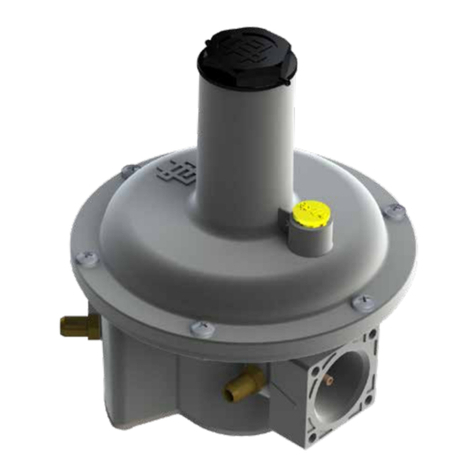
Watts
Watts FGD Series installation manual
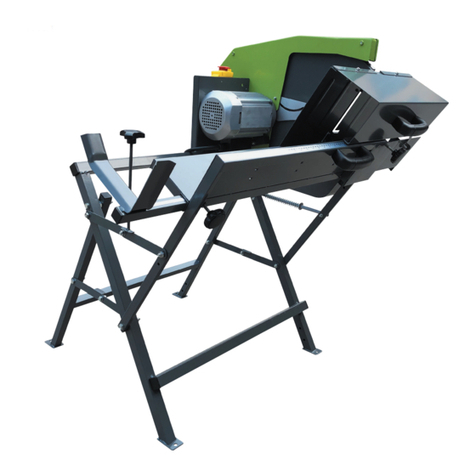
Grouw!
Grouw! 50799 instruction manual
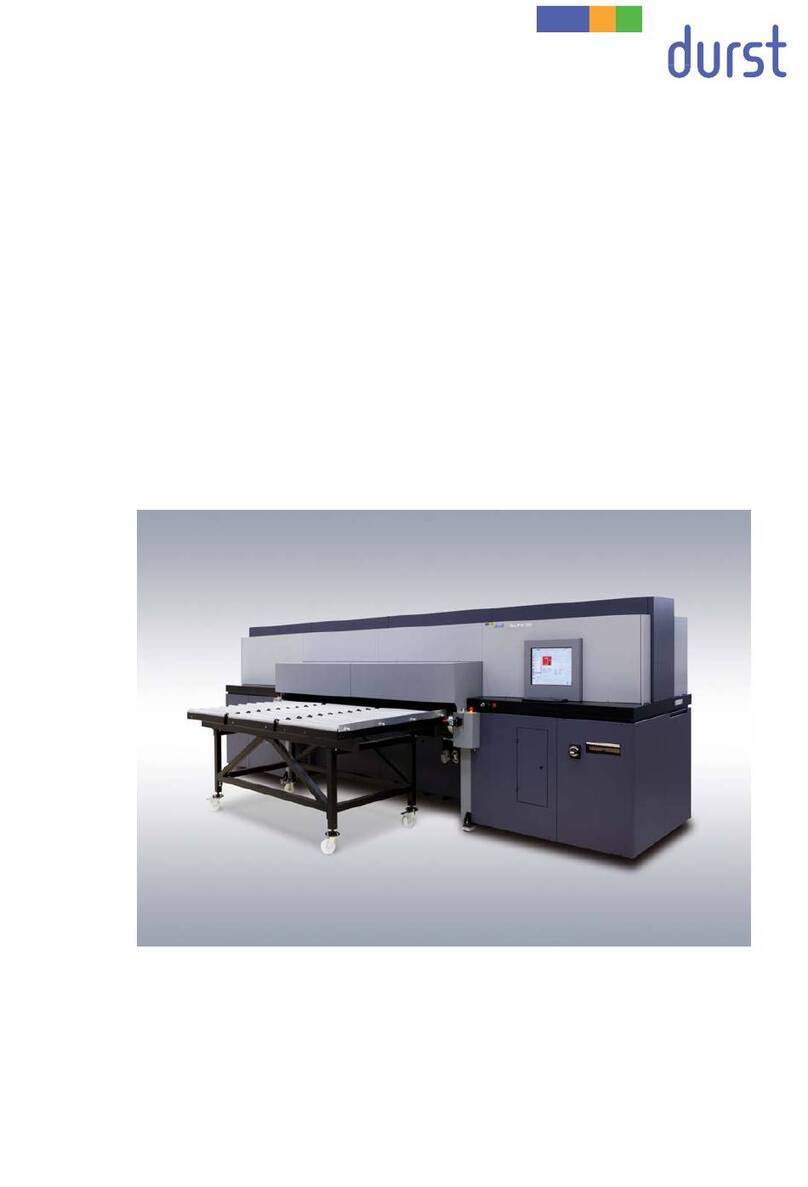
Durst
Durst Rho P10 200 operating instructions
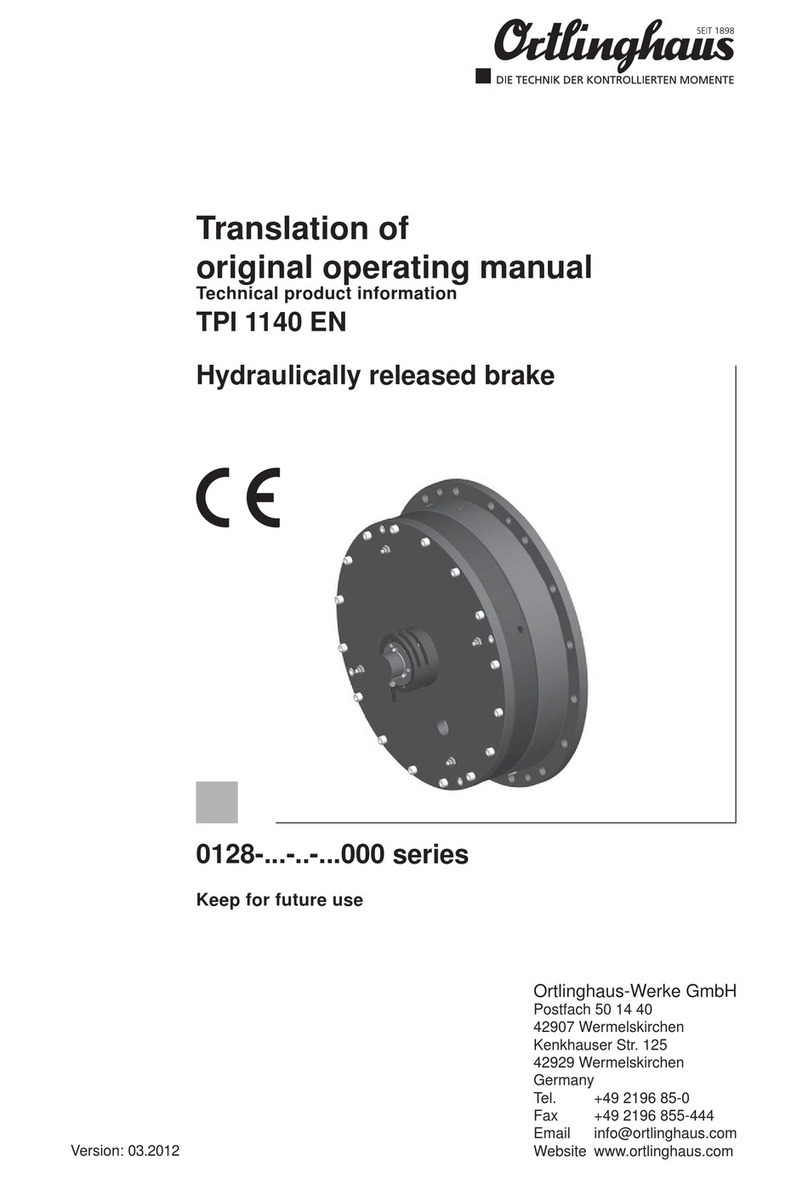
Ortlinghaus
Ortlinghaus TPI 1140 EN Translation of original operating manual

Keba
Keba KeTop T50VGA user manual
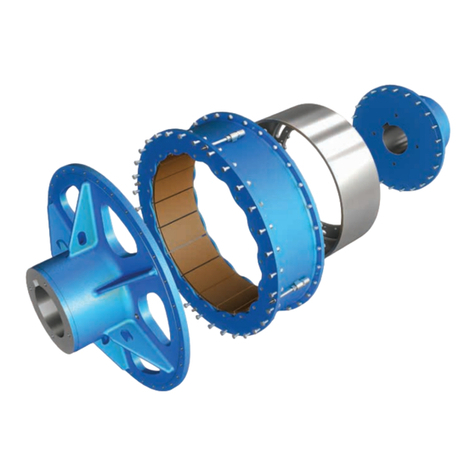
Eaton
Eaton AirFlex TLC 5004 Installation, operation and maintenance manual
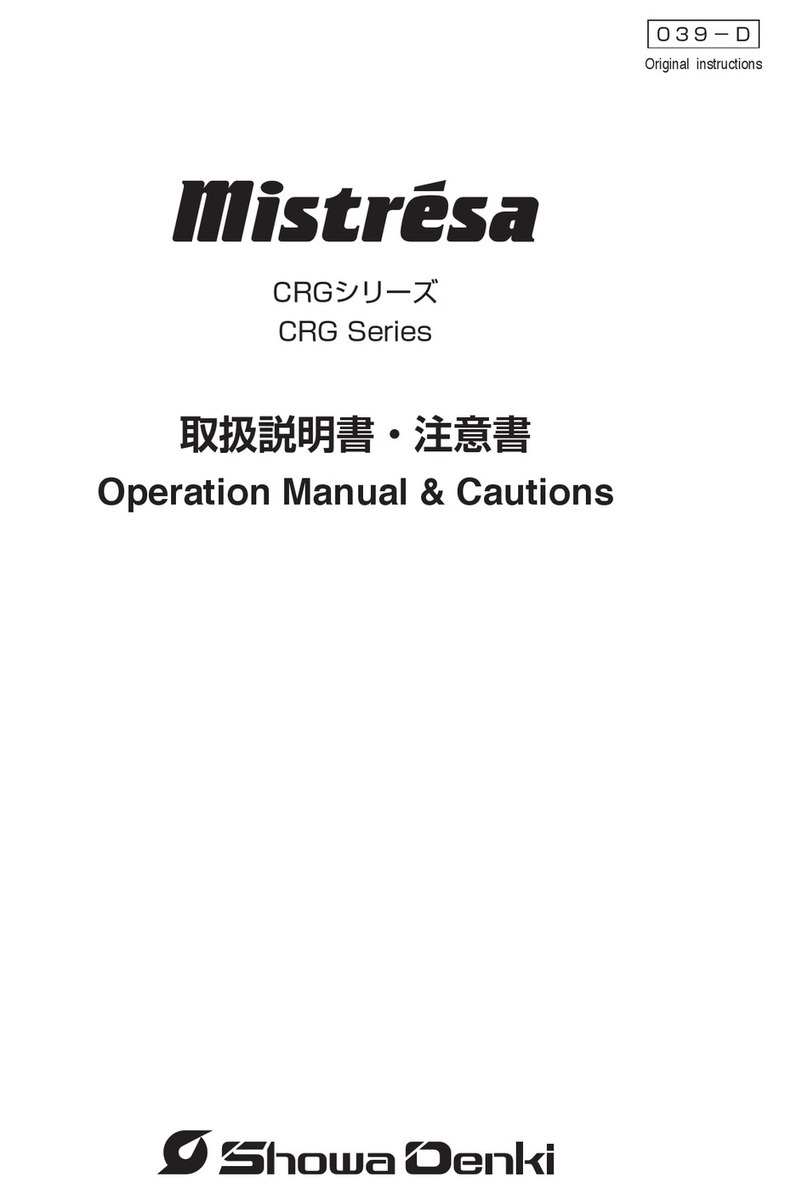
Showa Denki
Showa Denki Mistresa CRG Series Operation Manual & Cautions
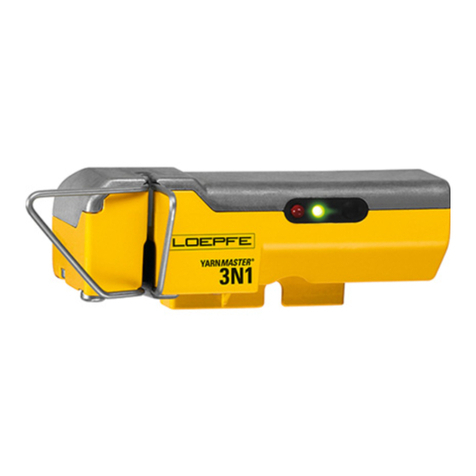
Loepfe
Loepfe YARNMASTER 3N1 FITTING INSTRUCTION
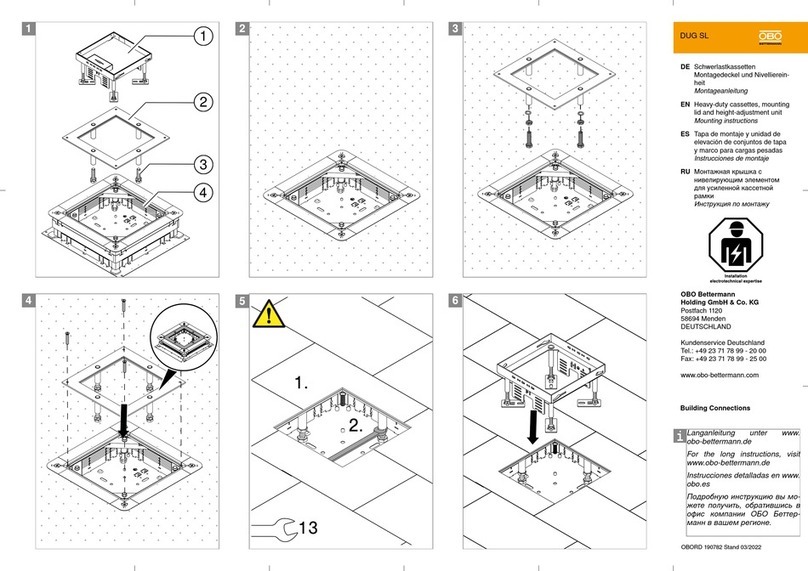
OBO Bettermann
OBO Bettermann DUG SL Mounting instructions

Bauer
Bauer BG 24 H instruction manual
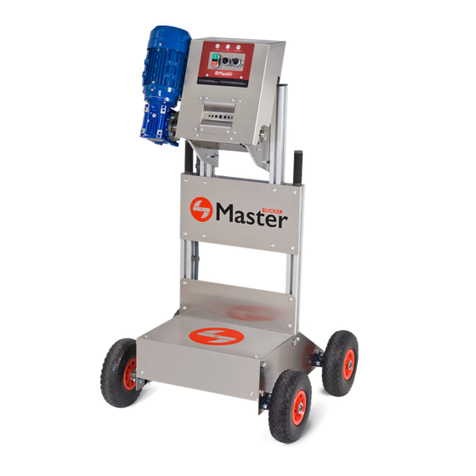
Master
Master MB Bucker 500 Instructions for use and maintenance
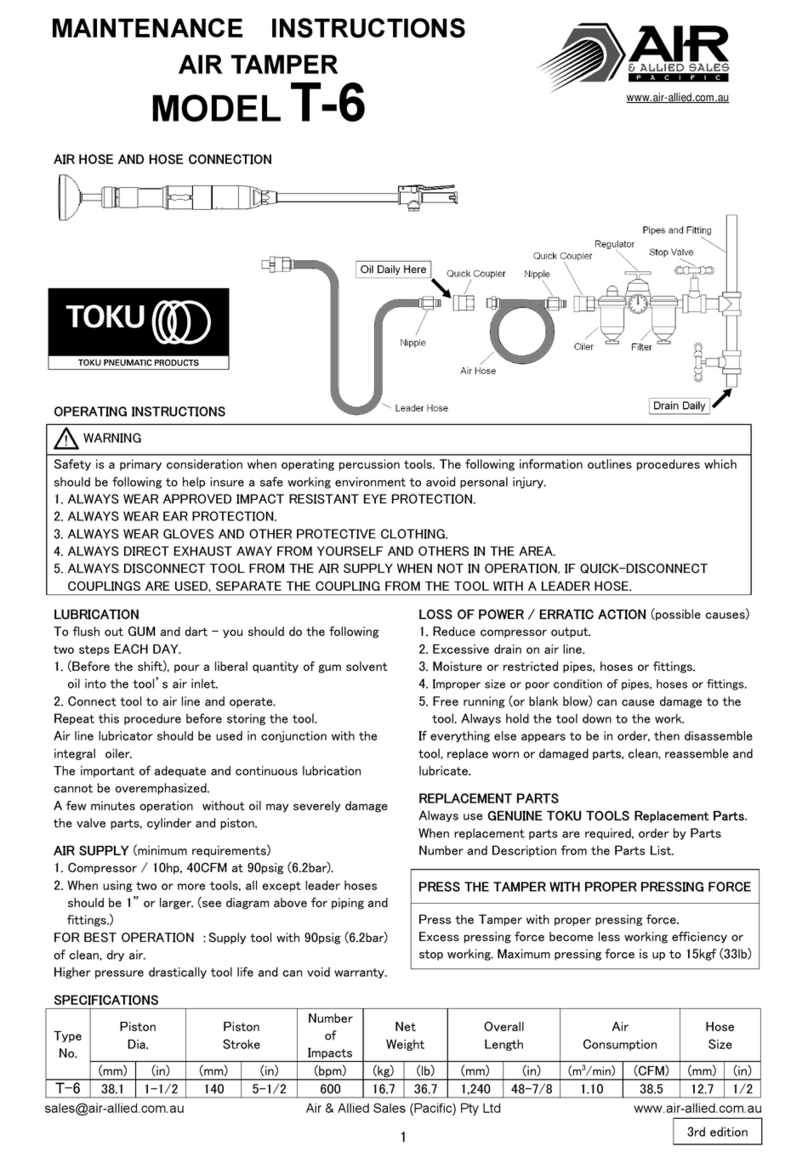
Air & Allied Sales
Air & Allied Sales TOKU T-6 Maintenance Instruction

